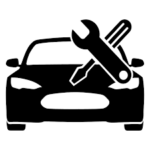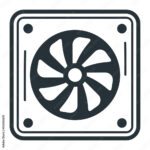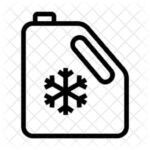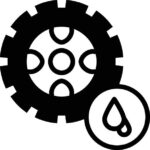CHANGE BRAKE FLUID
How to Change Brake Fluid with Castroil
Introduction
Changing your car’s brake fluid is crucial for maintaining the efficiency and safety of your braking system. Castroil offers high-quality brake fluids that ensure optimal performance and protection for your vehicle’s braking system. This guide provides step-by-step instructions on how to change your brake fluid using Castrol products.
Why Changing Brake Fluid is Important
- Maintains Braking Efficiency: Fresh brake fluid ensures your braking system operates effectively.
- Prevents Corrosion: Brake fluid can absorb moisture over time, leading to corrosion of brake components.
- Ensures Safety: Regular brake fluid changes help prevent brake failure, ensuring safe driving conditions.
What You’ll Need
- Castroil Brake Fluid: Choose the appropriate Castroil brake fluid for your vehicle (e.g., Castroil React DOT 4, Castroil React SRF Racing).
- Brake Bleeder Kit: To help remove old fluid and add new fluid.
- Wrench Set: For loosening bleeder valves.
- Catch Container: To collect old brake fluid.
- Clean Cloths or Paper Towels: For cleaning and wiping up spills.
- Protective Gloves and Safety Glasses: To protect your hands and eyes from brake fluid.
- Jack and Jack Stands: To lift and support your vehicle.
- Owner’s Manual: For specific vehicle instructions.
Steps to Change Brake Fluid
-
Preparation
- Read Your Vehicle’s Manual: Check the manual for specific brake fluid recommendations and instructions.
- Gather Supplies: Ensure you have all necessary tools and supplies.
- Safety First: Wear protective gloves and safety glasses.
-
Lift and Secure the Vehicle
- Jack Up the Vehicle: Use a jack to lift your vehicle and secure it with jack stands.
- Remove the Wheels: Remove the wheels to access the brake bleeder valves.
-
Locate the Brake Fluid Reservoir
- Open the Hood: Find the brake fluid reservoir, typically located near the back of the engine bay on the driver’s side.
- Clean the Area: Wipe the reservoir cap and surrounding area to prevent contamination.
-
Remove Old Brake Fluid
- Siphon Old Fluid: Use a turkey baster or similar tool to remove as much old fluid as possible from the reservoir.
- Add Fresh Fluid: Refill the reservoir with fresh Castrol brake fluid to the maximum fill line.
-
Bleed the Brakes
- Start with the Furthest Wheel: Typically, this is the wheel farthest from the master cylinder (usually the rear passenger side).
- Attach Bleeder Kit: Connect the brake bleeder kit to the bleeder valve on the brake caliper.
- Loosen the Bleeder Valve: Use a wrench to slightly open the bleeder valve.
- Pump the Brake Pedal: Have an assistant pump the brake pedal several times and hold it down.
- Release Fluid: Open the bleeder valve to allow old fluid to escape. Close the valve before the pedal is released.
- Repeat: Continue this process until fresh fluid flows out of the bleeder valve. Ensure the brake fluid reservoir does not run dry by topping it up regularly.
-
Repeat for All Wheels
- Move to the next wheel, following the sequence recommended in your vehicle’s manual (typically rear passenger, rear driver, front passenger, front driver).
- Repeat the bleeding process for each wheel.
-
Check the Fluid Level
- Top Up the Reservoir: Once all wheels have been bled, ensure the brake fluid reservoir is filled to the maximum line with Castrol brake fluid.
- Replace the Cap: Securely replace the reservoir cap.
-
Reassemble the Vehicle
- Reinstall the Wheels: Put the wheels back on and tighten the lug nuts.
- Lower the Vehicle: Carefully lower the vehicle off the jack stands.
-
Test the Brakes
- Check Pedal Firmness: Press the brake pedal to ensure it feels firm and responsive.
- Check for Leaks: Inspect around the bleeder valves and reservoir for any signs of leakage.
-
Dispose of Old Fluid Properly
- Environmental Safety: Collect the old brake fluid in a catch container and take it to a local recycling or hazardous waste disposal center.
Choosing the Right Castrol Brake Fluid
-
Castroil React DOT 4
- Suitable for most vehicles, offering high performance and reliability.
-
Castroil React SRF Racing
- Ideal for high-performance and racing applications, providing superior performance under extreme conditions.
-
Castroil Brake Fluid DOT 4 ESP
- Specifically designed for vehicles with electronic stability control systems.
Conclusion
Regularly changing your brake fluid with high-quality Castroil products ensures the safety and efficiency of your vehicle’s braking system. Follow these steps to maintain your brakes and enjoy the superior performance and protection that Castroil brake fluids offer.
For more information on Castroil brake fluids and maintenance tips, visit Castrol’s Website or contact:
Castroil Customer Service
[Address]
[City, State, ZIP Code]
[Email Address]
[Phone Number]
Trust Castroil to keep your braking system in optimal condition, providing the safety and reliability you need on the road.


 OUR BRANDS
OUR BRANDS CASTROIL DIFFERENTIALS AND AXLE FLUIDS
CASTROIL DIFFERENTIALS AND AXLE FLUIDS SERVICES
SERVICES

 CAR MAINTENANCE
CAR MAINTENANCE HOW OFTEN TO CHECK ENGINE OIL
HOW OFTEN TO CHECK ENGINE OIL TOP UP CAR ENGINE OIL
TOP UP CAR ENGINE OIL CHANGE BRAKE FLUID
CHANGE BRAKE FLUID FIX CAR RADIATOR LEAK
FIX CAR RADIATOR LEAK TOP UP ENGINE COOLANT
TOP UP ENGINE COOLANT WHY CHANGE BRAKE FLUID
WHY CHANGE BRAKE FLUID


